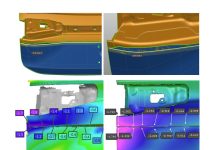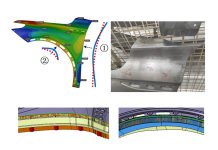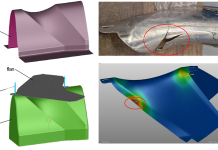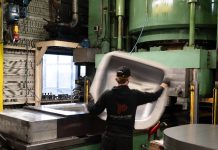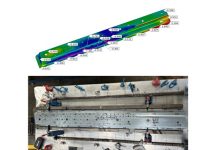Tryout and Production Map Standards in AutoForm-Sigmaplus
According to Marc Lambriks, General Manager at AutoForm Netherlands, there is no substitute to using the try-out and production map standards in AutoForm Sigma. Four questions were put to him to find out why, in his eyes, this command surpasses all others in terms of importance, and here he challenges readers to consider just how pivotal a role it plays in the forming of sheet metal.
 Here’s the interview. Read and ask yourself: Could you deny this tool is essential?
Here’s the interview. Read and ask yourself: Could you deny this tool is essential?
Why is this tool your all-time favorite?
Many customers know that AutoForm-Sigma can systematically improve their process during the engineering phase of tools, and they also know AutoForm-Sigma can predict robustness of a process. Where things get interesting is in dealing with customers in my territory who are deeply involved in the tryout and production side. Many already have ready to use die-sets on hand for example, and yet they are often not aware of the fact that they can also use AutoForm-Sigma to speed-up or even improve their try-out processes, or to solve production issues. In order to convey this to customers we do a demonstration by applying the try-out and production map standard on their simulation model so that they can first hand see the effects of possible changes in the process and the positive impact it has on the quality of the product.
Please tell us about negatives lurking below the surface. What problems does it solve?
 The biggest problem it solves for the customer is a shortening of the lead-time and reduction of try-out panels. Suppose for example that a part splits during try-out and one of the options is to reduce the draw bead. If you were blindly modifying the draw bead in real world engineering, it can happen that it causes yet another negative defect, so you’d then have to go back and modify something else to deal with it, and that is going to cost a lot of time and money.
The biggest problem it solves for the customer is a shortening of the lead-time and reduction of try-out panels. Suppose for example that a part splits during try-out and one of the options is to reduce the draw bead. If you were blindly modifying the draw bead in real world engineering, it can happen that it causes yet another negative defect, so you’d then have to go back and modify something else to deal with it, and that is going to cost a lot of time and money.
What Sigma does here is that it solves those issues, as it points the user towards the best solution before the ‘tires hit the tarmac’ so to speak. The tool is impressive because the software not only predicts these occurrences, but it really exposes all this to the user, which ensures that in real world application the tool is not going to be modified incorrectly.
 What does this tool do in relation to robustness?
What does this tool do in relation to robustness?
I’m glad you asked. Robustness is indeed another area of AutoForm-Sigma and what it does is that it indicates the stability of the forming process. As you know a simulation is just one point in a very big range of possibilities that influence metal forming behavior. Such scatter is caused by variation in for example material properties (such as yield strength, tensile strength or the anisotropic behavior of the material) and the process settings (press speed, lubrication, press force etc).
The robustness module is required because it is capable of modeling that variability and shows how stable the actual forming process really is.
Combining try-out map with robustness allows the user to see the influence of this scatter on splits, wrinkles and springback, and even surface defects and skid lines. So everything the actual process engineer wants to see is presented in order to determine whether his designed parts are feasible and whether the quality is good enough. What’s more, it really works.
Visit our Homepage HERE.




